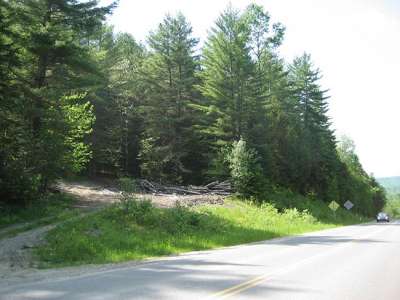Now that the weather has improved, I’ve been out on my bike more. A couple years ago I wrote a blog about the wildlife you can see from your bike seat, and how this quiet mode of travel often leads to sightings of animals before they have a chance to scatter. For whatever reason, this year it’s a different type of scenery that’s caught my attention as I pedal: I’ve passed by at least a dozen roadside log landings. On hot days, I can smell the freshly cut wood before I even see it.
Stopping for a moment to study the landings has been educational (and a good excuse for taking a break to catch my breath). I’ve noticed a pretty big disparity in what I’ve seen. For example, some are tree-length jobs where the landings are relatively large; others are cut-to-length harvests where the openings are much smaller. But the biggest difference has been in the appearance and apparent organization of the landings. Most have been neat and orderly: wood sorted and stacked in piles awaiting pick-up. A few, though, have been chaotic, haphazard affairs that looked something like a child’s Lincoln Log house after it’s been run over by the family dog. Wood (and bark and limbs and piles of rocks and random pieces of equipment) is scattered about with seemingly no coherent plan.
The reality is that logging is an inherently messy proposition, and no log landing is going to look like a manicured park. But it’s important to remember that, for many people, log landings are the only part of a timber harvest they’ll ever encounter. Landings are often out in the open for everyone passing by to see, so a little care goes a long way.
Quite a few years ago I spoke about landings with Peter Smallidge, senior extension associate with Cornell University’s Department of Natural Resources. He told me that, “People see log trucks, and they see log landings; that’s their impression of logging. The effort that goes into log landings is important because that helps maintain the good public image of woodlot management.”
Of course there are also efficiency and environmental motivations for maintaining a neat log landing. Beyond making sure there’s enough room for equipment to maneuver, for trucks to get in, and to stockpile logs, there’s a whole science to the proper design of these sites.
A qualified forester can provide guidance in this regard, and there are plenty of resources available online (including these from Cornell, as well as the states of Vermont and New Hampshire). But following some basics produces a landing that’s not only neat looking, but also efficient and environmentally responsible: Landings should be big enough, but no bigger. Flat ground is better than sloped ground when it’s available. Locations near streams should be avoided when possible. Erosion control and water runoff measures (silt fencing, hay bales, etc.) should be employed when necessary.
On some of the landings I’ve passed by recently, I’ve seen these practices employed. On others, not so much. In one case, it wasn’t the smell of wood that gave away the landing’s location, but the massive amount of mud that had been tracked out onto the road. It’s something that Smallidge had mentioned to me. “Loggers may need to put down some type of material, such as cobble-size rocks or rubber tire mats that the log trucks drive over to knock some of the mud off the truck tires before they get out onto a municipal road,” he explained. Again, there’s no way to completely eliminate mud from logging jobs, but keeping it minimized and contained can go a long way with public perceptions.
Similar thought and attention is needed to restore landing areas once the harvest has been completed. In some cases, a simple clean-up of the site is enough; in others, grass seed or other vegetation may need to be planted to stabilize the soil and help prevent erosion. Some landowners even take advantage of the opening to establish habitat conditions for specific wildlife.
Done right, landings can be an advertisement for professionalism on the part of the logger, a credit to the forester, and a source of pride for the landowner. Done wrong, they can perpetuate negative perceptions about the forest industry. And you never know who might be passing by.



Discussion *